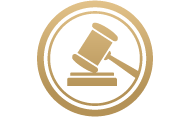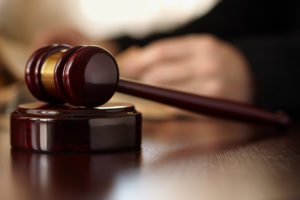What If I Was Partly at Fault in the Accident?
If you’re in a car accident, the circumstances that follow are generally fairly cut and dried: you are either contacted by the other driver’s insurance company, which will offer compensation, or you will hire a personal attorney to help handle your case to ensure that you’re fairly compensated for your injuries.
But what happens if you played a role in the accident?
Usually, you will still be compensated for the accident, but your attorney – in this case, don’t try to go it alone – can help determine your percentage of fault by examining your accident report, and if the opposing insurance company fails to offer a settlement and your case goes to court, a jury will likely reduce your claim by a certain amount to account for your role in the accident.
Your responsibility in a personal injury case – a slip-and-fall in which you failed to notice warning signs, for example – will usually be determined by a jury.
How is fault determined?
Liability is difficult to determine, especially in a personal injury case such as a car accident, which often hinges on the police report.
If the other driver receives a citation and you do not, even if you were partially at fault, it will improve your chances of winning a settlement.
Remember, however, that the language used in the police report will play a role in your settlement’s success or failure. Your attorney can help you navigate any wording that might trip you up in court.
Negligence on the part of the other driver can be determined as follows:
- The driver of the other vehicle had a duty to drive in a way that protected those on the roadway and the general public.
- The driver failed to uphold that duty, leading to the accident.
- Their violation of duty was ultimately responsible for the majority of the accident, as well as the injuries and damages that followed.
If you suffered injuries and documentation such as medical bills, insurance claims and work records can back that, you can likely file a claim, even if you were partly responsible for the accident.
The laws behind determining fault
If both parties were at fault in a crash – a drunk driver strikes your car while you are accidently traveling the wrong way on a one-way street, for example – then determining whether you can ask for damages falls under certain rules.
Under the Pure Comparative Fault law, both parties can be considered at fault in an accident. You as an injured party still have the right to seek damages, even if you were partially at fault, although those damages will be reduced based on the degree of fault. (For example, if you ask for a $400,000 settlement to cover your injuries and expenses and you were 10 percent at fault, your settlement will be reduced by $40,000.)
Under the Proportional Comparative Fault law, the person who holds the most responsibility for the accident – such as the drunk driver above – is not eligible to collect any damages. If fault is determined to be 50/50, no one is able to seek damages in the case.
Pure Contributor Negligence is the trickiest of the laws, because it states that even those who were only 1 percent at fault, such as not wearing your seatbelt at the time of the crash, while the other driver was 99 percent at fault, cannot pursue compensation.
The right personal injury lawyer can help you determine what type of compensation you can expect to receive following an accident, and you can decide what to do based on that consultation.
Be informed about law information and news with Law Associates for their insight into personal injury claims and partial fault.

